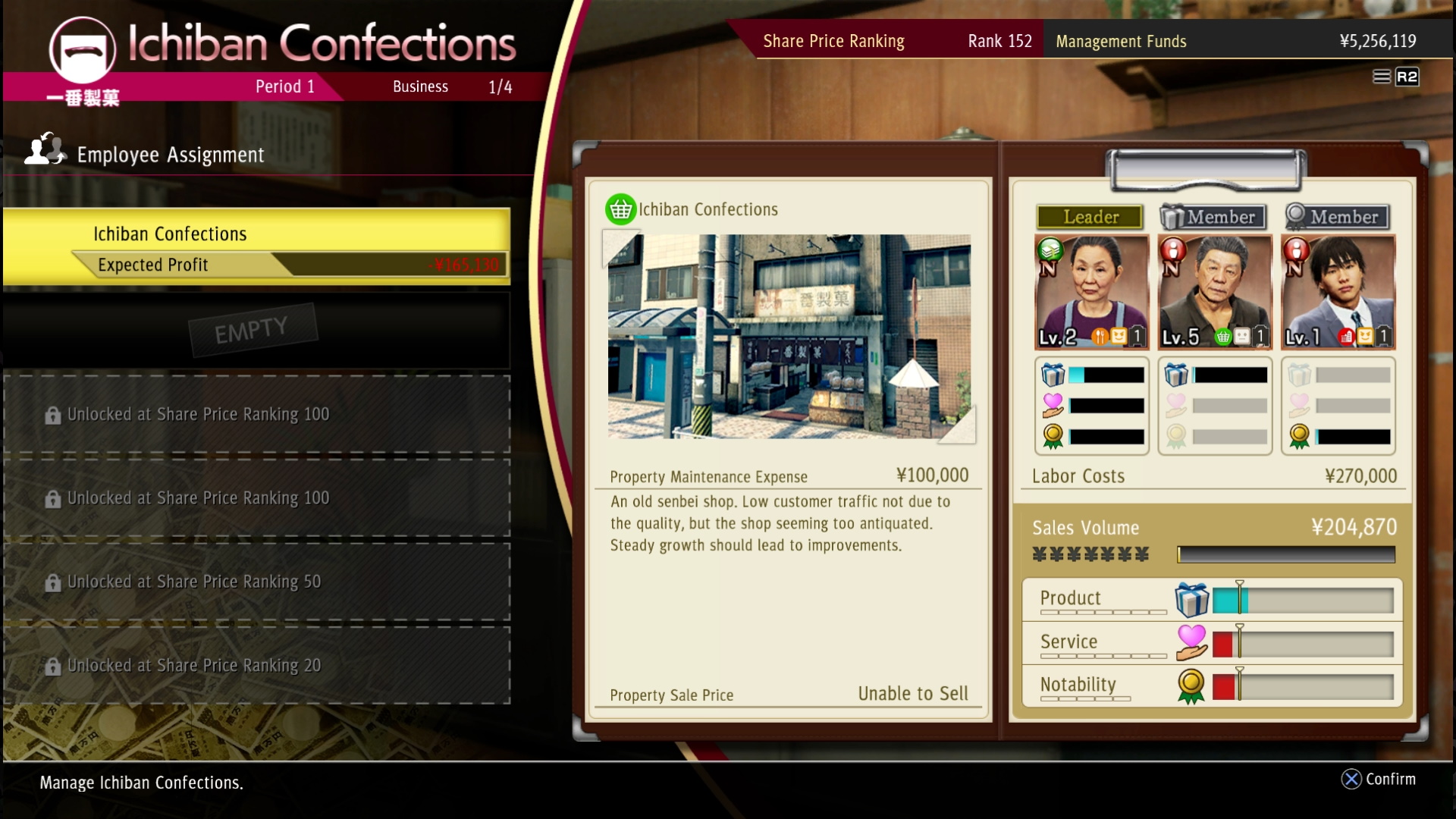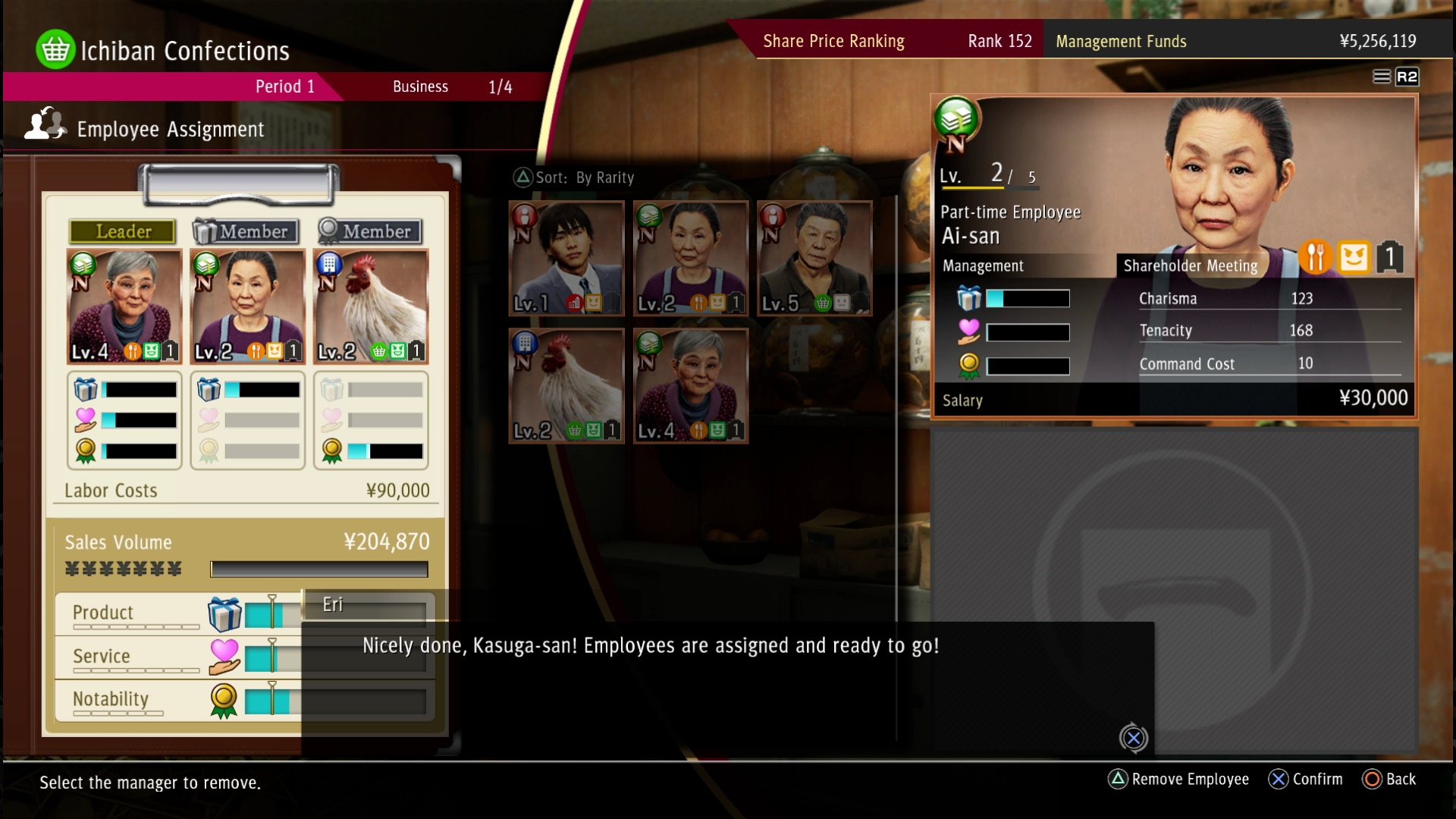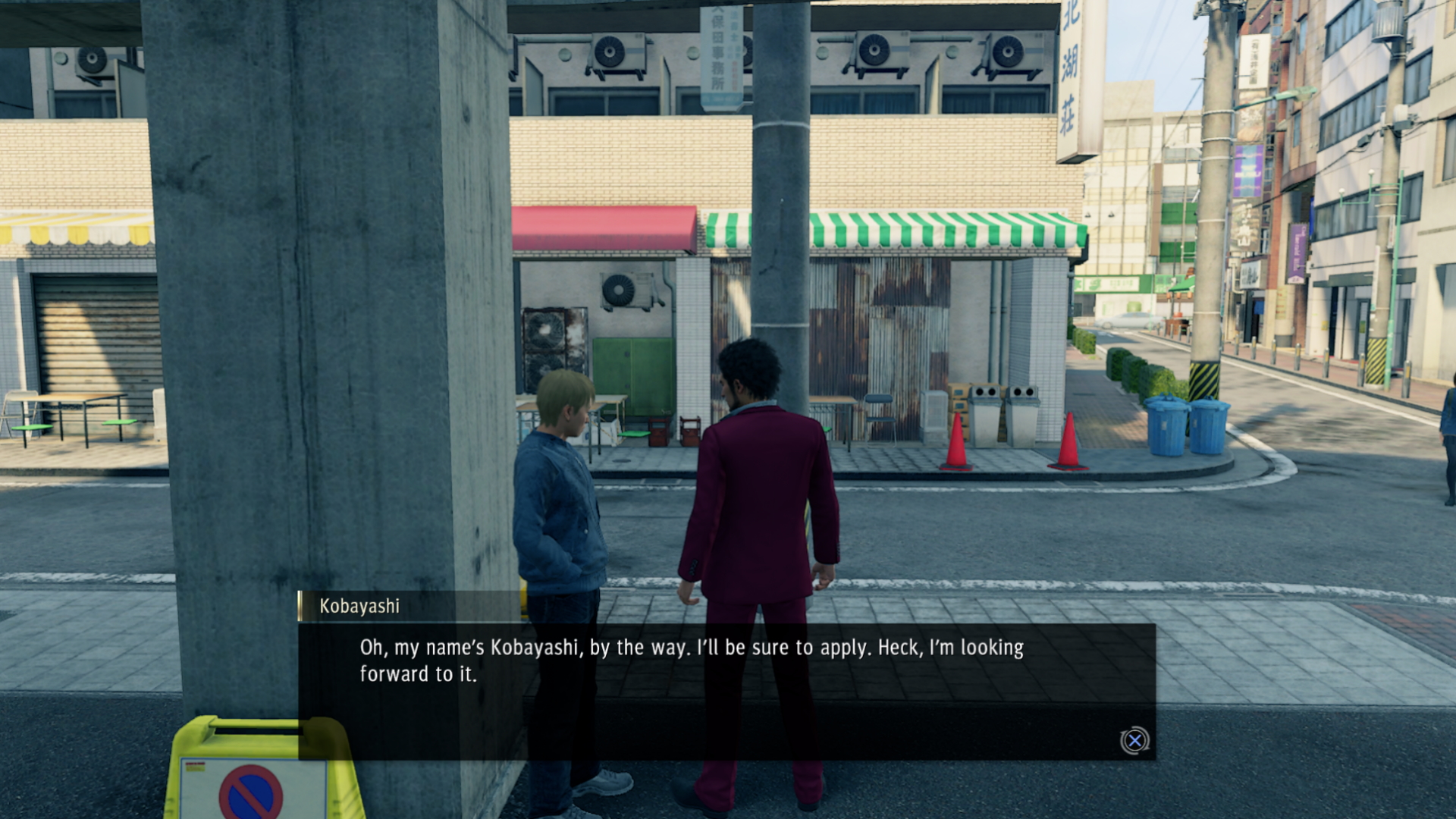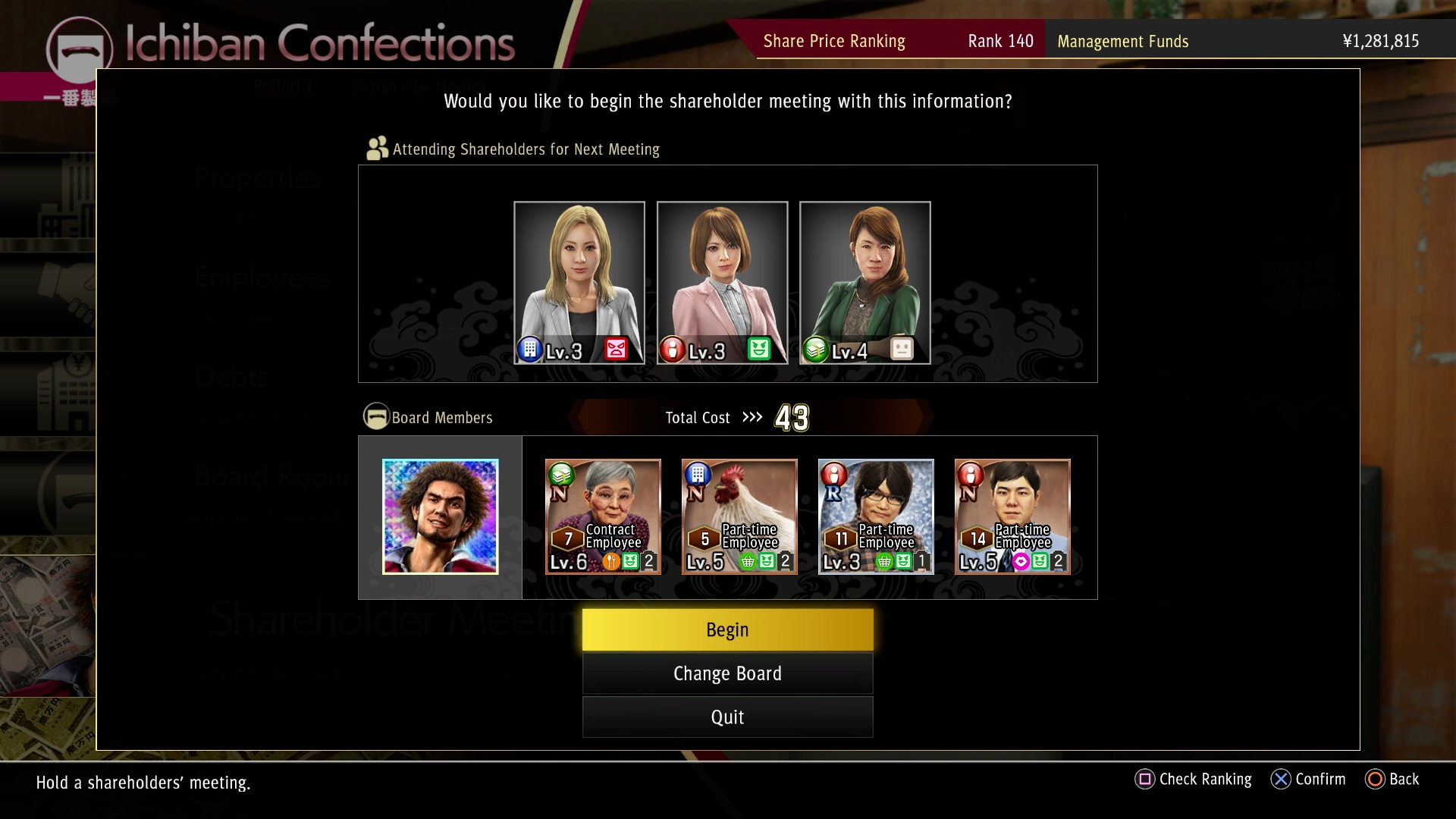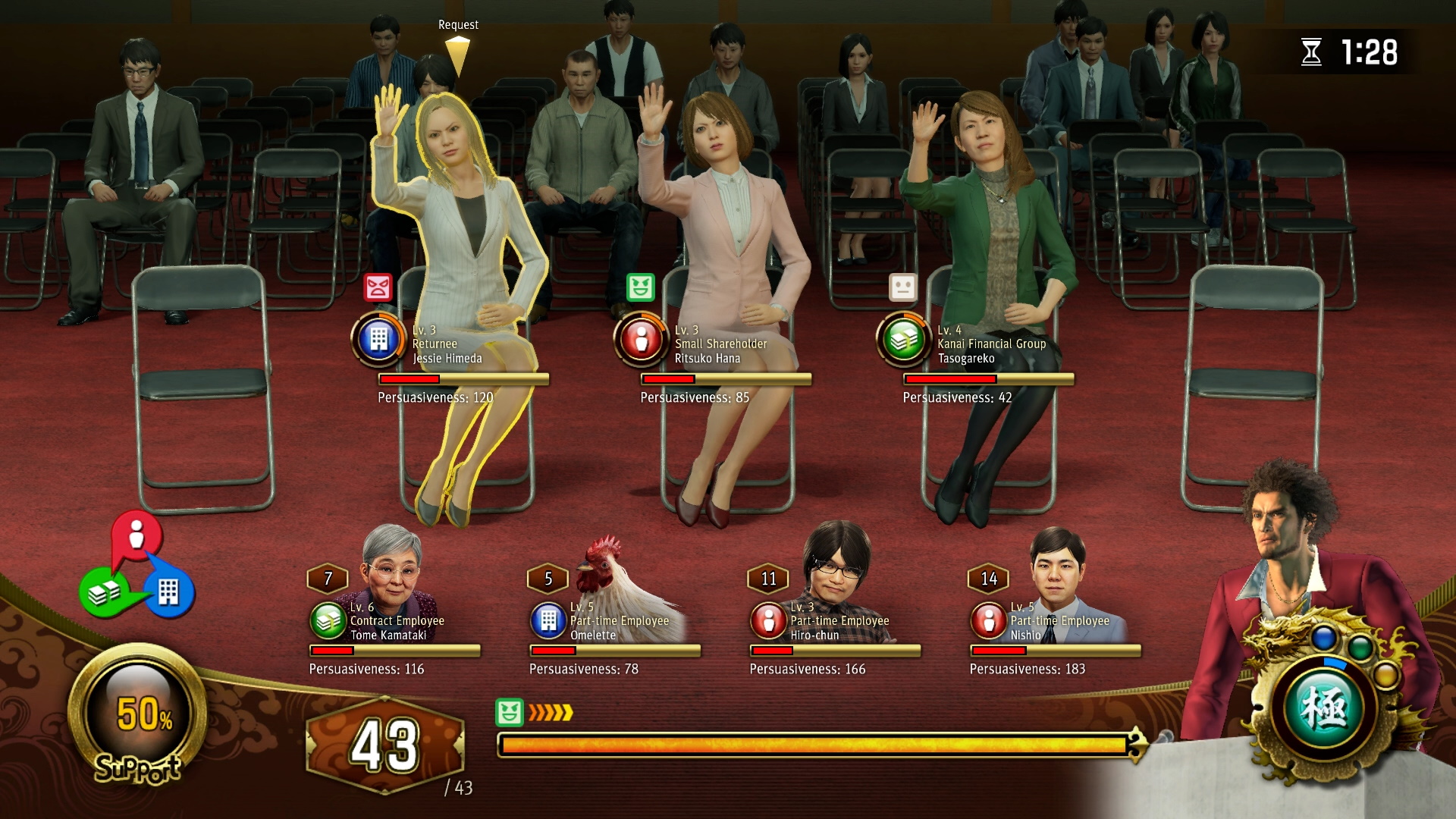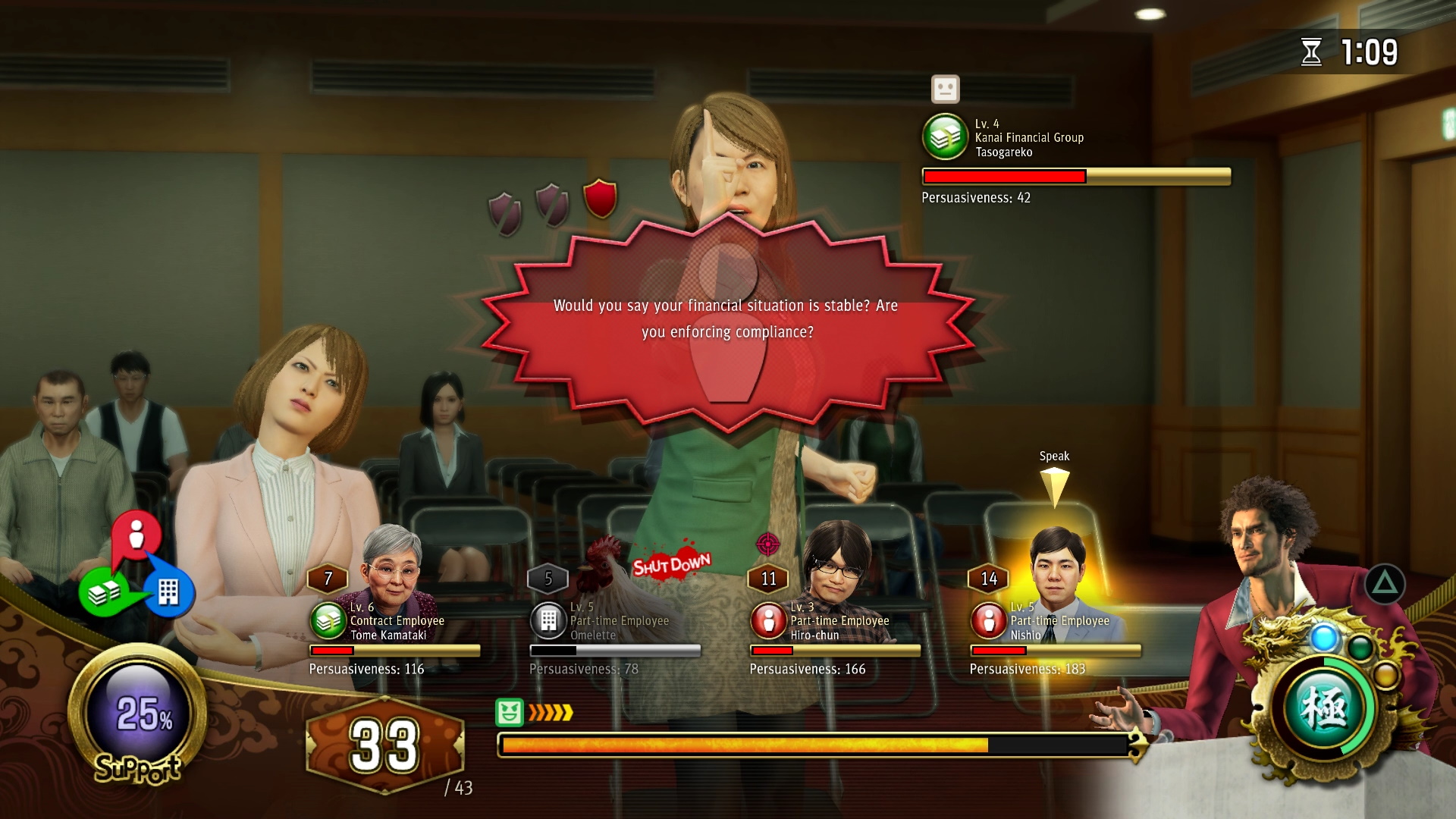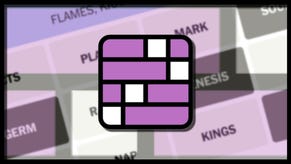Yakuza Like A Dragon business management: How to manage employees, properties, and shareholder meetings
Dragon's Den
Want to learn about Yakuza: Like a Dragon business management? If you want to earn money fast in Yakuza: Like a Dragon, then you'll want to try your hand at business management. It's a minigame that's not so mini, with a confusing mess of menus and stats that don't mean much at first glance. Don't let that scare you off, though, because we're here to walk you through Yakuza: Like a Dragon business management.
In this guide, we'll explain business management in Yakuza: Like a Dragon and break down the major aspects that you need to understand, including employees, properties, and shareholder meetings.
Here's a full rundown of how business management works in Yakuza: Like A Dragon:
- What is business management in Yakuza: Like A Dragon?
- Yakuza: Like a Dragon business management overview
- How to manage and hire employees in Yakuza: Like a Dragon
- How to buy and upgrade properties in Yakuza: Like a Dragon
- How to open for business
- How to complete Shareholder Meetings in Yakuza: Like a Dragon
- What are business management bonuses in Yakuza: Like a Dragon?
What is business management in Yakuza: Like A Dragon?
Towards the end of Chapter 5 you'll be introduced to Eri outside of Otohime Land (don't worry, it's unmissable). This is where you'll be introduced to Yakuza: Like A Dragon's business management minigame, which'll see you taking over Eri's "Ichiban Confections" business and attempt to climb the shareholder rankings. Eventually you'll be running multiple businesses, employing people, investing in your properties, and tackling Shareholder Meetings with ease. And most importantly, you'll find yourself raking in plenty of cash.
Yakuza: Like a Dragon business management overview
First up, you can't invest your own personal money into the business. And you'll only receive personal bonuses once you've successfully completed a Shareholder Meeting. This is something I'll get into just below.
Management is played out over two phases. You've got the day-to-day business stuff: hiring employees, assigning them, investing in properties, and hopefully turning a profit when you open for business. Opening for business is as you'd expect: inviting customers into your store and hopefully earning some yen in the process.
Once you've opened for business a total of four times, you'll then tackle a Shareholder Meeting to end that sales period. If you're successful here, you'll earn some personal profit, hopefully turn a decent business profit, and climb the Shareholder Rankings.
This is all something we'll get into below, I just wanted to lay the foundations a bit more before we get stuck in. There's a rhythm to how this management minigame works, and it won't be long before you get 'it', I promise!
How to manage and hire employees in Yakuza: Like a Dragon
Before we dive into the basics of employees, let's take a look at Ichiban Confections in the image above. Forget everything else for now, just note the three bars at the bottom right which show: product, service, and notability.
Now, look at the three employees above these bars. For each property (Ichiban Confections in this case), you can assign a total of three staff. One will be a leader, positioned on the left, while the other two are just regular staff.
Below, we'll list the mains stats represented on each employee card, starting from the top corner:
- The coloured circles at the top left of their portraits are relevant for Shareholder Meetings only. I'll get into this later.
- The letter 'N' indicates their rarity. As you progress you'll hire rarer staff with specialisations and better stats.
- The faces indicate motivation. Motivated employees are more productive and will make you more money. You can "auto care" for them in the employee menu which'll raise everyone's happiness levels to max. Get into the habit of doing so before opening for business or heading into Shareholder Meetings.
- When you open for business your employees will gain XP and level up. Doing so will increase their stats.
- Now note the three bars. This is what they are strongest at. The leader is particularly good at product, for example.
The leader will contribute all three of their bars/stats to the business (the big bars at the bottom). The other two members of staff will have some bars that are greyed out, as you can see in the above image. The grey bars do not contribute to your business. In the case above, this should explain why product is meeting expectations, as all three employees are contributing stats, but service and notability aren't. To boost the service and notability, you'll need to assign better employees.
How to assign employees to your business
What you want to do with every property is assign a mixture of three employees to make all the bars hit blue. In the case of Ichiban Confections, look at how I've swapped some folks out to do so in the image above.
With each business you want a leader with strong overall stats, as they'll contribute everything to the overall business. In this case the leader contributes plenty of service to bring it straight into the blue without any need for help, while bringing the other two bars up a bit. This means the other two employees have more than enough product and notability to help her tip these bars into the blue. Some employees are very good at one thing, while others are semi-decent at everything. Be aware of all this when swapping them around.
How to hire employees
Click "Hire" to hire new employees. Just bear in mind how much you'll need to pay them and whether the stats they bring to the table are worth it. If you can't find someone to hire, new potential employees tend to appear after shareholder meetings.
There are also potential employees out there on the streets of Yokohama. Talk to them and they'll often request an item in exchange for employment. I'm not sure that's how it works in the real world, but I'll go ask Katharine for a belated employee gift.
How to manage wages, layoffs, and training
It'll come as no surprise that you'll need to pay your employees wages. This will come off your total sales.
You'll also have to pay Surplus Labor Costs ie. the wages of employees you've not assigned to a property. Again, this'll be deducted from sales.
If you realise you've got a tonne of employees not doing anything, or if you've hired one that's much better than their 'equivalent', you can lay them off to reduce labor costs. Just be wary of laying off loads of folks as you may need them when you invest in other properties!
You can also put your employees through different forms of training. This'll grant them XP to level up their stats. The most important thing to bear in mind here is the management training. Most employees have a max level of five. Put them through this training and it'll up their max level to ten, so they can continue growing stronger as you open for business.
How to buy and upgrade properties in Yakuza: Like a Dragon
You'll start off with Ichiban Confections, but you can invest in another property right off the bat. As you climb the Shareholder Rankings, you can invest in even more.
When you buy a property, note a few things: the product, service, and notability bars, the number of employees you've got, and the stats your employees have. It's no use buying a property if you've not got the staff to fill them. Once you've bought a property, make sure you assign members of staff to fill those bars to blue.
You can also invest your management funds to upgrade existing properties. Investing in Sales Volume will increase the amount of income you'll earn when you open for business. Just be aware that it'll push the vertical line across for each stat. This means it'll be tougher for your employees to contribute to reach the blue.
If you invest in the others, it'll increase the property's base product, service, or notability. This means your employees won't need to help them out as much with their own stats, and it'll be easier for you to get past those vertical lines and into the blue.
How to open for business
So now you've assigned your employees to your properties and made sure they're happy, head back to the main menu and you'll notice that the Open for Business "Projected Results" should be nicely in the green. This is the amount of profit you'll expect to net when you go ahead and let the sales commence. Opening for business is an automated process.
Let's take a look at the image above. First up, each row represents one of your properties and the staff you've assigned. You can see how motivated your staff are by looking at the face icon to the right of their portraits.
As time goes by mini-Ichiban will run across the screen collecting cash. You'll always start in the red as you'll need to pay off your wages, overheads, and the like. As time goes by, you'll eventually hit green and start turning a profit.
When Ichiban comes to a halt, the sales period is over and you'll shut up shop. You can see your total sales at the top right of the screen and a second screen will break down all the numbers for you. Unless you love all the maths, just pay attention to the "Overall Profit".
After you've opened for business your employees will gain XP and your profit will go straight into your management funds. Lovely stuff. Just remember to keep an eye on your employee motivation gauges as they will have taken a hit.
How to complete Shareholder Meetings in Yakuza: Like a Dragon
Shareholder meetings are ossibly the most confusing, most stressful element of it all. I'm going to break it down bit by bit, so hopefully by the end of this section it'll seem a little less intimidating.
How to prepare for a Shareholder Meeting
First off, as always, make sure your employees are motivated.
Next, select the "Board Room" option from the menu screen. This is where you'll assign employees to go into the Shareholding Meeting with you, and it's also where you can view which board members you'll be going up against.
When choosing who to take in with you, note the colours at the top left of their portraits first. You want to bring in colours which'll perform well against the Shareholders.
When selecting characters, you must remember that Red beats Green, Green beats Blue, and Blue beats Red.
- If you take on Red with Green, you'll only deal one damage.
- If you take on Red with Red, though, you'll deal two damage.
- If you take on Red with Blue, you'll deal three damage (max).
Now, take into account the hexagons with the numbers in them. This indicates how much it costs to use them in battle. The lower the number, the better.
How to win a Shareholder Meeting battle
Your aim in these battles is to break the shareholders' guard by answering questions. If you break their guard, you'll have a chance to deal damage. Deal enough damage and they'll be charmed by you and sit down, eliminating them from the fight. Charm them all and you win.
Take a look at the image above. You'll see that there are three Shareholders out front and your roster down below. Pay attention to the rising bars next to the shareholders' colours, as well as the little face emojis. Let these bars rise to the top and you'll take "Support" damage.
Note the point total next to the orange bar. This fills up over time and will deplete every time you attack with an employee.
You want to target the most irritated shareholders first, which is the one on the far left in this case.
Here we've hit this shareholder with a rebuttal. She's red, and we used our 11 point red employee against her. This broke her guard by two out of three, indicated by the shield icons.
Next, we hit her with our other red employee breaking her guard entirely. Now she's vulnerable. At this point you want to attack with employee colours who will do well against her. Blue or red, ideally, but Green if you've got no other option.
Just bear in mind your point total which'll fill up over time. Employees cost points to use in battle, so do your utmost to maximise each usage as you'll have limited time.
At the bottom right of the screen you'll see Ichiban's apology meter which can fill up three times, represented by the little circles. These are effectively big AoE attacks which'll deal increasing amounts of damage to all shareholders.
Tier one apology deals damage to all shareholders. Tier two does more damage, recovers your employees a bit, and stuns shareholders briefly which'll stop them from asking questions for a bit. Tier three is similar to two, but with greater everything.
What are business management bonuses in Yakuza: Like a Dragon?
After a succesful shareholder meeting, you'll climb the shareholder rankings, earn some profit for your business, and earn some personal cash.
When you return to the main menu, sometimes Eri will highlight employees who've taken note of your successes and want to get hired. Occasionally there will be other business proposals, or even bonuses to training courses for certain periods of time too. Be sure to take advantage of these when they swing around, but don't be afraid to refuse them too. Be smart with your money.
That covers everything you need to know about Yakuza: Like a Dragon business management. Our Kappa Statue locations and Missing Cat locations guides will also help you net even more cash, so don't pass those up. If you're struggling with boss battles rather than shareholder battles, then learn how to get the Premium Sushi Set so that you can get a useful new Poundmate (which is also a crawfish named Nancy). If you just want to blitz through to the end, check out our guide on how many chapters there are in Yakuza: Like a Dragon.



